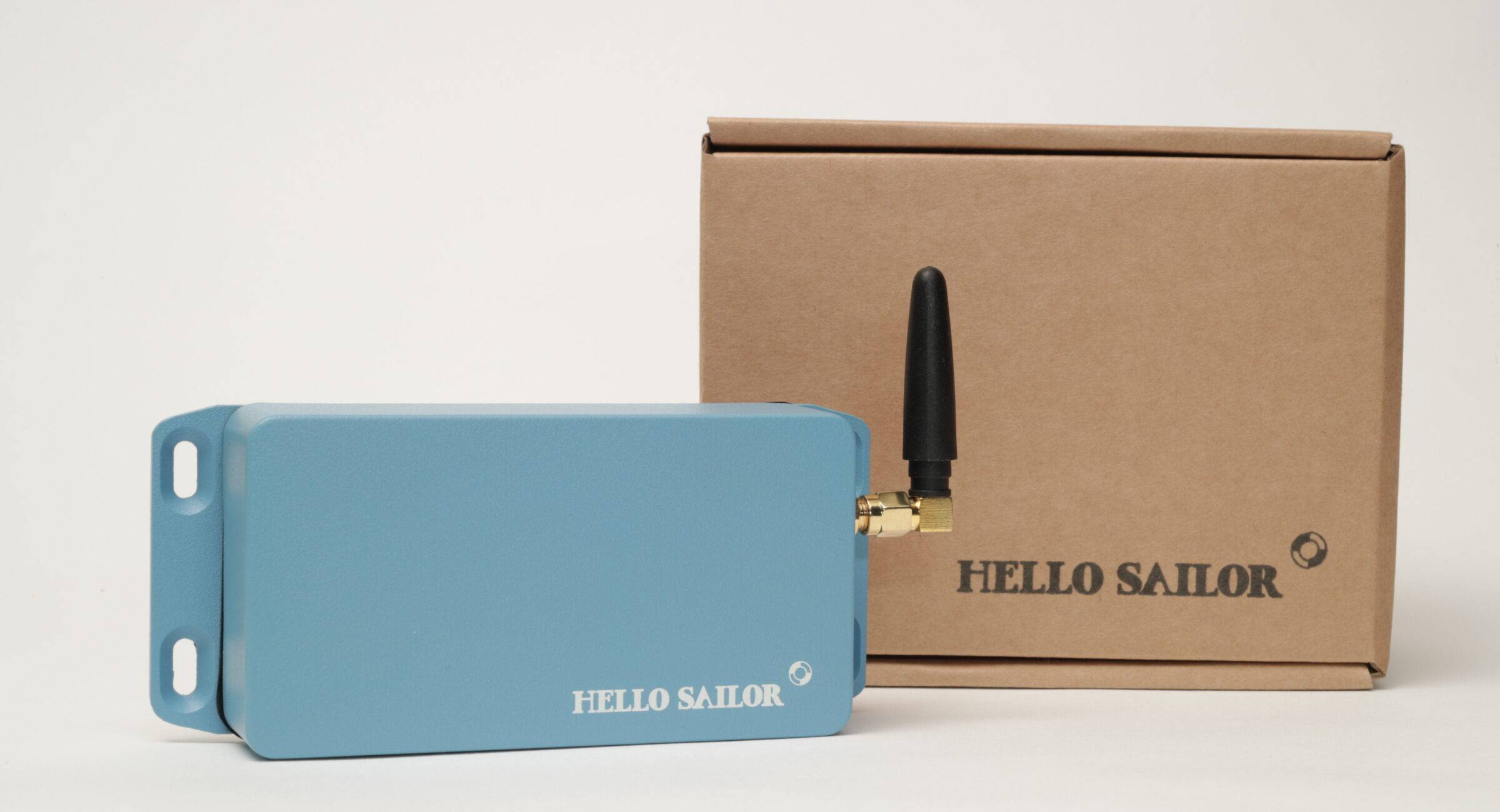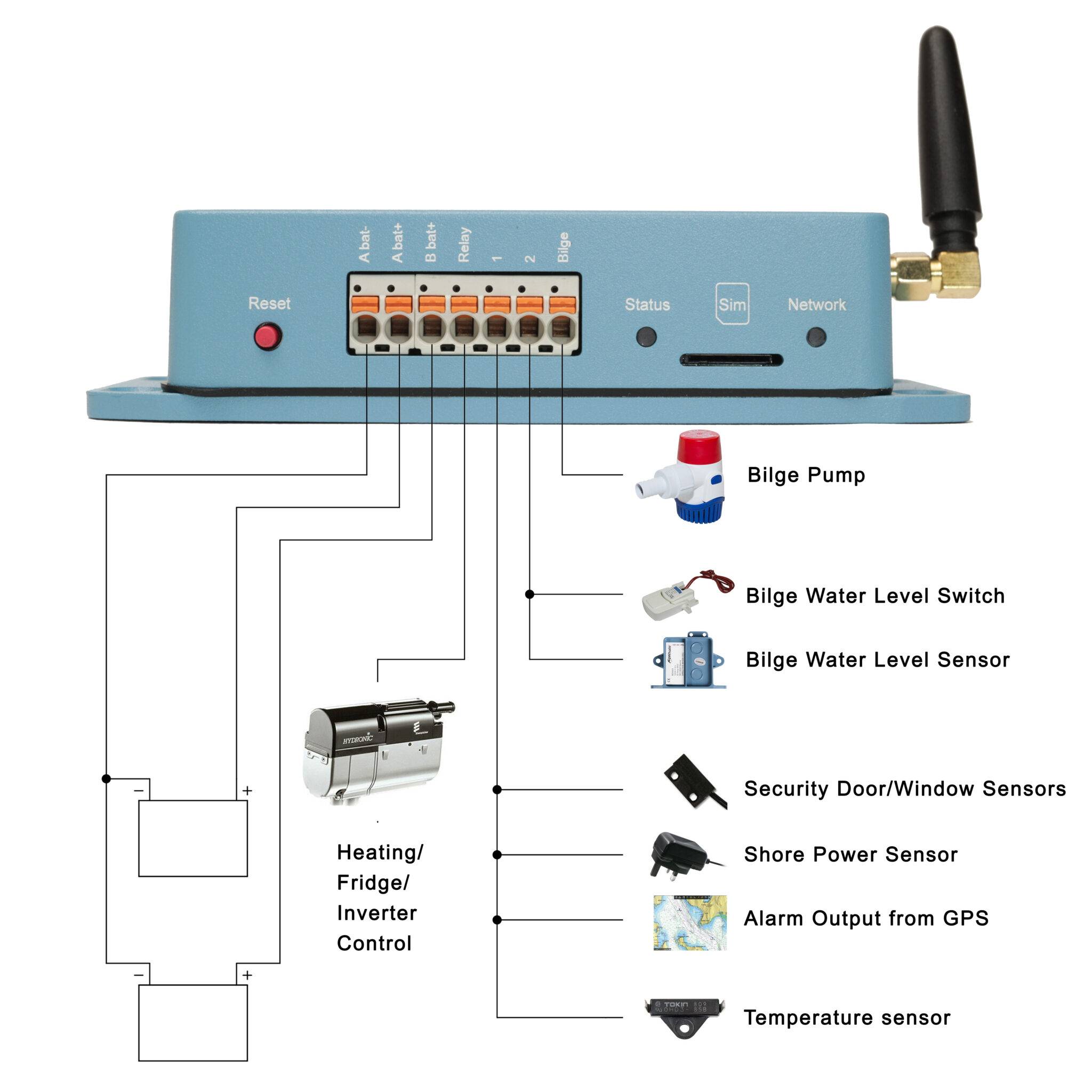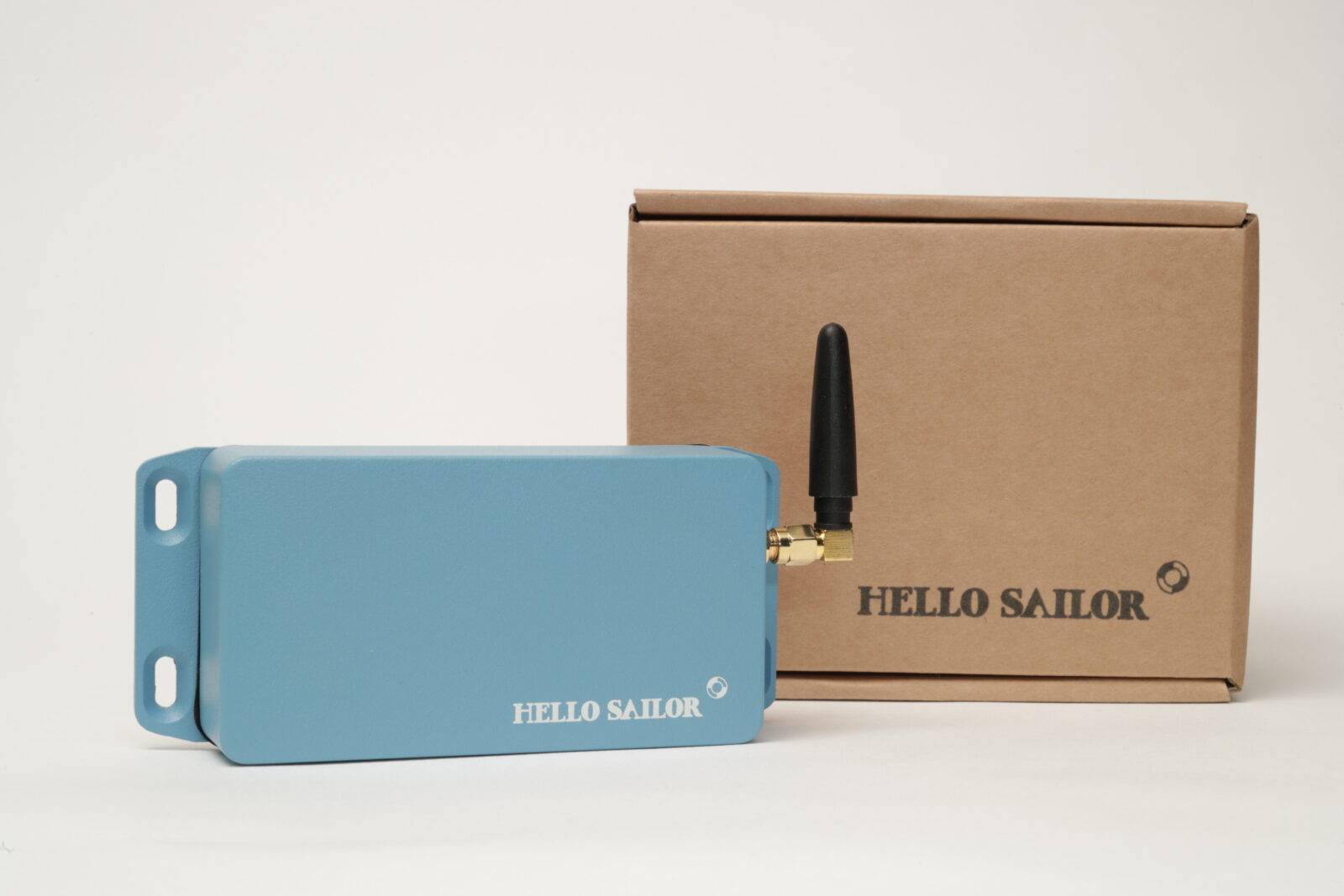Table of Contents
Our Boat Monitoring Back Story
In 2017 BRP featured an article on DIY GSM cell phone alarm systems for boat monitoring. At the time of publishing the boat monitoring market was fairly limited to two main plans of attack. Route number one, buying a specially designed kit such as BoatGuard or Boat Warden, one of which is now known as yacht sentinel. Both kits at the time were for around £500-620.
Now, In the grand scheme of the boating world, £600 might seem like a drop in the ocean, especially in comparison to the usual eye-watering costs of boat maintenance. But, for us practical boaters it’s always been our mission to discover affordable ways in which we can all enjoy the water, through renovation and restoration.
Naturally, BRP gravitated towards the DIY route of using modified circuit boards, which were originally designed to be used as SMS alerts, for break-in/ intruder alarms in housing properties. The concept is quite simple, a trigger is created AKA a window or door is opened, triggering an SMS alert to a phone. At the time, these systems were very affordable, GSM PagerZ6 GSM Auto dialer £99, GSM 021 £57 – A5 GSM Alarm Auto-Dialer and SMS Sender.
The beauty of these systems is that they translated well to the needs of the boating world. A double bonus was a lot of them these alarms were also run of 12V systems. Over time some of these systems have become obsolete and slowly and surely some of the age-old marine-based companies such as Ray Marine have noticed a demand for the remote monitoring of vessels.
So where does that bring us?
Well, the greatest thing about a competitive market, is the improvement of technology that brings us. Often with a side helping of affordability. Both of these are bonuses for the practical boater market.
Before we continue, let us state that we're aware there is now a wide array of Boat Monitoring available to name a few; Mobisat / FMB204, Vesper Marine / Cortex, Security Systems / C-POD , Boat Command, vircru, Zigboat, Siren Marine. All offering something different to the market and each more mouth-wateringly appealing to us boaters. However, as we stated, we at BRP like to discover and support independent businesses and startups in the marine industry, particularly ones that are affordable to the masses.
What Is HELLO SAILOR?

Hello Sailor takes care of the important things first. Has your bilge pump started running, and are your batteries going to be able to keep delivering it power? Sensors for these functions are built into the unit, which will send you a message if anything abnormal is detected. After that, there are inputs for additional sensors, and an output for controlling something onboard your boat.
The creators have made a boat monitoring system that links the functionality of those higher-priced units, with the creativity of the DIY approach when it comes to sensor choice. Switches are used to alert you to potential problems or to monitor your boat, and relays added to control bigger loads such as heaters. £100 bilge water sensors become £20 float switches from your local chandlery. Doors sensors and relays are standard items, sold at cost on the Hello Sailor website. If you want a frost sensor or a motion sensor, the makers ask you to send them a message, and they’ll have a look for something that will suit from their suppliers.
Based in Bristol in the UK, they say that their aim is to bring boat monitoring and peace of mind to all boaters. They’ve been building marine computers for the commercial marine industry for over 20 years, but between them they’re also boat builders, sailors and liveaboards. By utilizing their existing workshop from the commercial marine stuff, and continuing their other loves of wooden boatbuilding and electronic tinkering, they’ve been able to offer a product that uses marine grade components and design - with circuits boards assembled by their usual supplier in Germany, whilst keeping the cost down to a price that makes it worthwhile.
No Apps Just good old-fashioned SMS.
Now, with all of these systems, once the novelty of checking your battery voltages from home has worn off, they settle down to being used a few times a month, to turn on the heating or warn you of a low battery or intruder, and it’s here where Hello Sailor becomes truly affordable. There are no ongoing subscription fees, just a Pay As You Go SIM card of your choice - once you’ve bought the unit it’s yours. A suggested SIM card is included but the makers are keen to hear of any new deals that customers find, with the latest deals from new companies like 1p mobile, this could work out to a few pence a year, bringing boat monitoring within reach of almost all of us.
With many systems keeping their basic units at a low price, they make up the shortfall on sensors, and on subscriptions that typically run at around £10 a month. This may be a price worth paying for those of us who love our boats and can’t keep them on a mooring at the end of the garden, but it seems a high monthly cost for something you hope will only be sending you a few messages a year. Hello Sailor say by using text messages rather than a cloud server they are able to remove any monthly costs to the user.
When asked if they’ll be building an app, they say they might if people really want it, but it goes against their ethos - it’s just a pretty way of displaying the same information. With app development costs running to tens of thousands of pounds, and a longer backline route for data through a cloud provider such as Amazon or Google, each wanting it’s cut for a message alongside the phone company, they say they don’t see the need to be reducing reliability and adding these monthly costs. Currently, by sending the message Status to the unit, it replies with a message listing what’s happening with each sensor, and whether any alarms have been triggered but not yet reset by the user. There are a few other messages for querying the signal strength, controlling a relay, and setting the number to text in the event of an alarm, but that’s basically it.
Until recently, the ability to control something onboard using your phone would have seemed like an unnecessary extravagance for most boaters. But as many of us get used to connected homes and the ability to know everything from anywhere, the option to turn on the heating before you arrive at your boat seems one worth taking. The unit itself has an onboard solid-state relay large enough to control the switches of most devices, but if you don’t want to hack into your heater wiring, using that output to control a standard automotive or AC relay lets you wire it the easy way.
The goal has been to make a device that can be used on all boats and all moorings, even those that don’t have the perceived safety of a marina gate and staff to look after them. Drawing only 12 milliamps brings Hello Sailors power to within the range of an automatic bilge pump sensor, which typically draws around 8 milliamps when the pump isn’t running. The use of text messages rather than an internet cloud has been a deliberate move to use the method most likely to get the data from your boat to your phone. Even if you only have a tiny signal on your phone or mooring, an SMS text will get pushed through by the phone company, bypassing the alternative internet based route through that cloud service, and the costs incurred. By sticking with these initial goals, the makers seem to have created a boat monitoring system that we can all use.

The Technical Spec
| Input voltage | 7-32 Volts DC |
| Typical current draw | 0.012A avg. |
| Max current draw @ 13v | 0.5 amp |
| Required A & B battery, Relay, Bilge terminal fuses | 1 amp |
| Sensor 1 & 2 output voltage | 4 Volts DC |
| Sensor 1 & 2 alert trigger at | 0 Volts DC |
| Bilge alert trigger at | 7-32 Volts DC |
| Maximum relay load | 0.5 amps |
| Operating temperature range | -10°C to 55°C |
| Maximum humidity | 85% |
| Enclosure material | Aluminium |
| Country of Manufacture | UK/Germany |
| GSM band | 850/900/1800/1900 MHz |
| GSM power | 2W @ 850/900Mhz 1W @ 1800/1900Mhz |
| Dimensions excl. antenna (mm) | 137 x 59 x 32 |
| Certifications | UKCA, CE |

